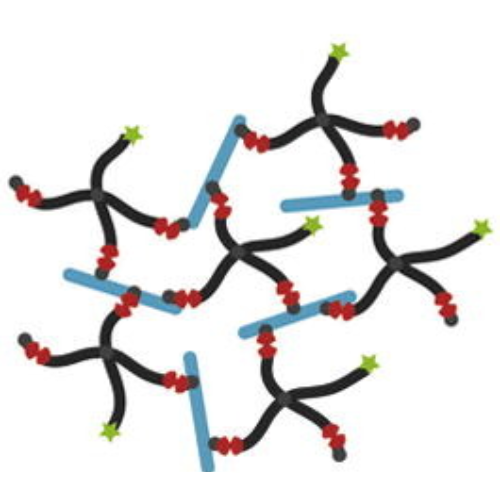3D extracellular matrix interactions modulate tumour cell growth, invasion and angiogenesis in engineered tumour microenvironments.
Interactions between tumour cells and extracellular matrix proteins of the tumour microenvironment play crucial roles in cancer progression. So far, however, there are only a few experimental platforms available that allow us to study these interactions systematically in a mechanically defined three-dimensional (3D) context. Here, we have studied the effect of integrin binding motifs found within common extracellular matrix (ECM) proteins on 3D breast (MCF-7) and prostate (PC-3, LNCaP) cancer cell cultures, and co-cultures with endothelial and mesenchymal stromal cells. For this purpose, matrix metalloproteinase-degradable biohybrid poly(ethylene) glycol-heparin hydrogels were decorated with the peptide motifs RGD, GFOGER (collagen I), or IKVAV (laminin-111). Over 14 days, cancer spheroids of 100-200 um formed. While the morphology of poorly invasive MCF-7 and LNCaP cells was not modulated by any of the peptide motifs, the aggressive PC-3 cells exhibited an invasive morphology when cultured in hydrogels comprising IKVAV and GFOGER motifs compared to RGD motifs or nonfunctionalised controls. PC-3 (but not MCF-7 and LNCaP) cell growth and endothelial cell infiltration were also significantly enhanced in IKVAV and GFOGER presenting gels. Taken together, we have established a 3D culture model that allows for dissecting the effect of biochemical cues on processes relevant to early cancer progression. These findings provide a basis for more mechanistic studies that may further advance our understanding of how ECM modulates cancer cell invasion and how to ultimately interfere with this process. STATEMENT OF SIGNIFICANCE: Threedimensional in vitro cancer models have generated great interest over the past decade. However, most models are not suitable to systematically study the effects of environmental cues on cancer development and progression. To overcome this limitation, we have developed an innovative hydrogel platform to study the interactions between breast and prostate cancer cells and extracellular matrix ligands relevant to the tumour microenvironment. Our results show that hydrogels with laminin- and collagen-derived adhesive peptides induce a malignant phenotype in a cell-line specific manner. Thus, we have identified a method to control the incorporation of biochemical cues within a three dimensional culture model and anticipate that it will help us in better understanding the effects of the tumour microenvironment on cancer progression.

- Acta Biomater. 2016 May;36:73-85
- 2016
- Cell Biology
- 26971667
- PubMed
Enabled by:
